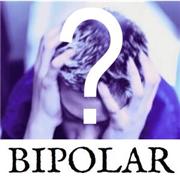Bipolar Awareness
What is Bipolar?
Bipolar – sometimes known as manic depression – is a severe mental health illness characterised by significant mood swings including manic highs and depressive lows. The majority of individuals with bipolar experience alternating episodes of mania and depression. Both males and females of any age and from any social or ethnic background can develop the illness. The symptoms can first occur and then reoccur when work, studies, family or emotional pressures are at their greatest. In women it can also be triggered by childbirth or during the menopause. The key to coping with bipolar is an early diagnosis, acceptance of the illness and adapting your lifestyle so you are in control of the symptoms as much as possible. Management of the illness can be achieved through strategies involving medication, health care, therapy and self management.
Bipolar - The Facts
- 1% to 2% of the population experience a lifetime prevalence of bipolar and recent research suggests as many as 5% of us are on the bipolar spectrum.
- Bipolar also has a huge impact on family and friends.
- On average it takes 10.5 years to receive a correct diagnosis for bipolar in the UK and and before bipolar is diagnosed there is a misdiagnosis an average of 3.5 times.
- Compared to other health problems, treatment of bipolar is still badly affected by misunderstanding and stigma.
- Bipolar affects every aspect of your life including your ratelationships. Family and friends can all be put under stress. This is why you need to get a correct diagnosis, accept treatment and start to learn how you can adapt your lifestyle to cope with the ups and downs.
Degrees of Bipolar
Most individuals who suffer from the disorder are simply diagnosed with bipolar disorder. However, medical professionals categorise bipolar into 1 of 6 conditions. These are:
Bipolar I
Individual’s mood swings move across the mood scale encompassing both manic episodes and depression.
Untreated, manic episodes generally last three to six months.
Depressive episodes last rather longer – six to 12 months - without treatment.
Bipolar II
Individuals experience a prevalence of depression. Likely to have more than one episode of severe depression, and the majority of individuals with Bipolar II will experience hypomania (6 to 8 on the mood scale) rather than extreme manic episode (8 to 10 on the mood scale).
Mixed State
Symptoms of mania and depression are present at the same time, which may result in agitation, trouble sleeping and significant change in appetite, psychosis and suicidal thoughts.
Rapid Cycling
This occurs when individual’s mood swings change faster. More than four mood swings happen in a 12-month period. Rapid Cycling affects around one in ten people with bipolar, and can happen with Bipolar I and II.
Cyclothymia
Individuals experience mood swings but at a much lower level. Symptoms must last for a period of at least two years, with no period longer than two months in which there has been a stable state and no mixed episodes. Although individuals diagnosed with cyclothymia are on the bipolar spectrum, the relative mildness of the mood swings means you are not diagnosed with bipolar. However cyclothymia can develop into bipolar.
Psychosis
Sometimes severe mania (8 to 10 on the mood scale) or depression (2 to 0 on the mood scale) is accompanied by periods of psychosis. Psychotic symptoms include hallucinations and delusions.














